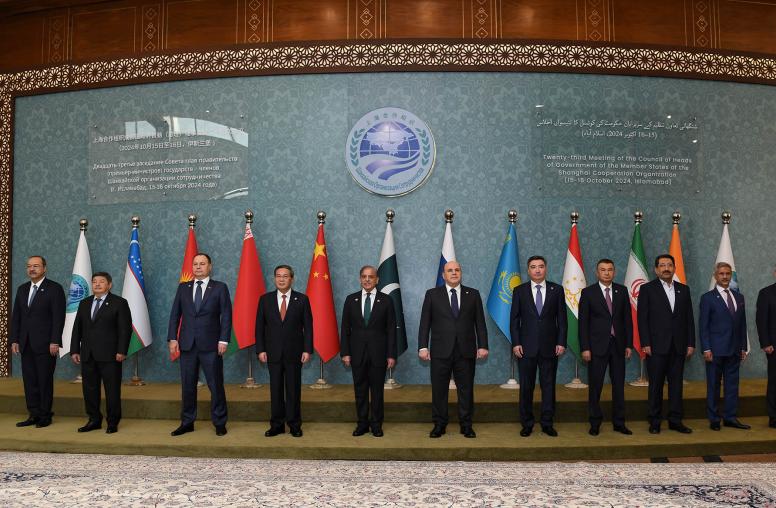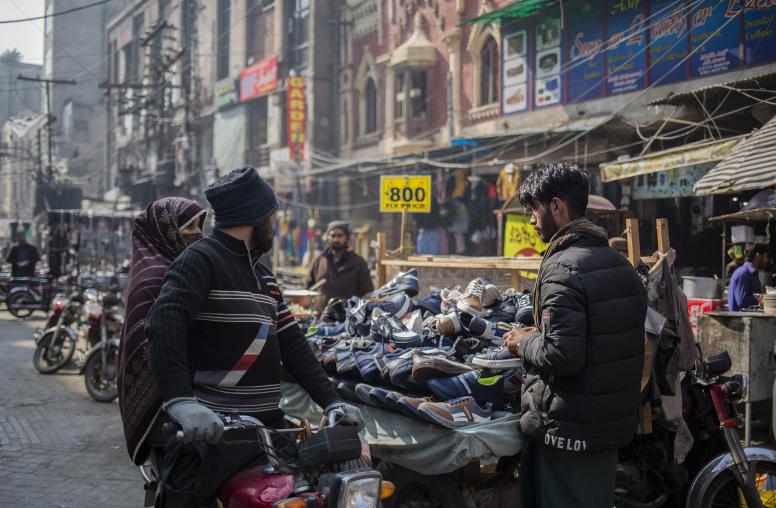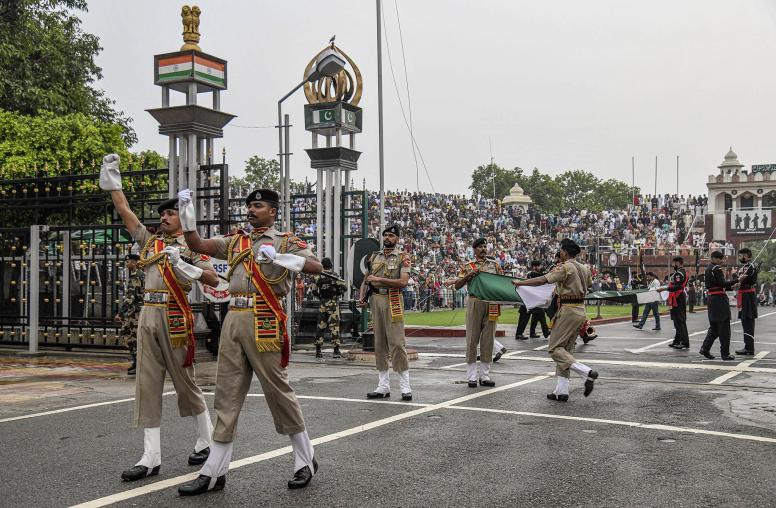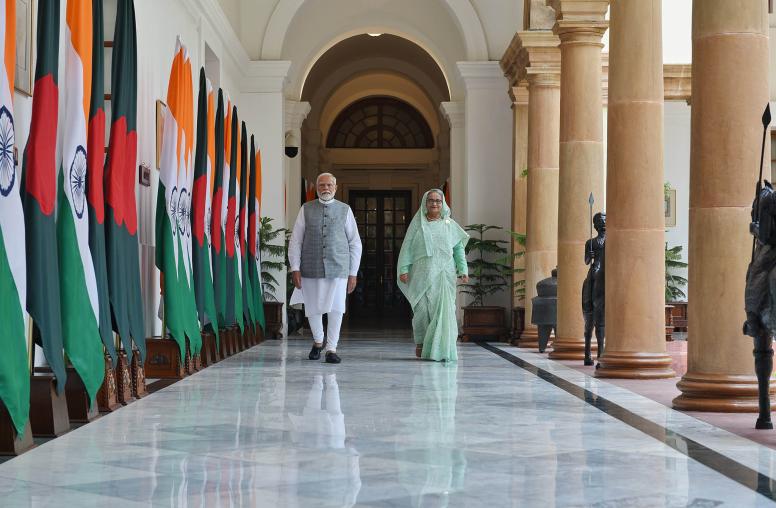Deradicalization Programming in Pakistan
The December 2014 terrorist attack in Peshawar that killed 132 schoolchildren forced Pakistan to acknowledge the extent of its ongoing problem with radical Islamist militancy. Islamabad, however, has yet to implement a comprehensive deradicalization strategy. In January 2015, it took a formal step in this direction with its twenty-point National Action Plan in response to the Peshawar attack—a step, but only a first step. If deradicalization is to meet with any success in Pakistan, the national narrative itself needs to change.
Summary
- Over the last fifteen years, Pakistan has become a hub for radical Islamist militant groups.
- Despite the rising militancy and increased terrorist attacks, however, the country has yet to implement a comprehensive deradicalization strategy.
- Lack of access to mainstream education, poverty, and weak legal and political institutions are major contributors to a growing league of young jihadi recruits.
- Most deradicalization programming is led by the military, is concentrated in the Swat valley, and has little connection to scattered efforts by police and civil administration elsewhere in the country.
- Although the Pakistani army and civil society institutions have taken steps to counter violent militant ideologies, the government has yet to step up to the plate.
- Most deradicalization programming—in Pakistan and elsewhere—emphasizes the importance of economic incentives and alternative livelihoods.
- Ideological countermessaging and efforts to prevent recruits from reconnecting with militant networks are also elements of successful programs.
About this Brief
This Peace Brief looks into the deradicalization programs in place in Pakistan today, compares what little information is available on such initiatives with similar ones carried out in other countries, and suggests a general way forward for Pakistan. Funded by the United States Institute of Peace (USIP), the research and study were undertaken through USIP’s South and Central Asia Center. Selina Adam Khan is a graduate of the London School of Economics and Political Science. Her areas of focus include terrorism, nuclear issues, and the global political economy.
Introduction
Pakistan has become a hub for local and transnational militant groups adhering to violent and radical Islamist ideologies. Thousands of civilians, including politicians and activists, have died in the onslaught of terrorism that Pakistan has faced since the mid-2000s. The December 2014 attack on a school in Peshawar, which killed 145 people, 132 of whom were students, appears to have been a turning point for the Pakistani military and civilian government, strengthening the resolve to combat terrorism and antistate actors.
In January 2015, Pakistan launched a twenty-point National Action Plan (NAP) in response to the Peshawar attack.1 The most high-profile aspect of the plan has been the special courts under military officers established to facilitate trials and mete out speedy justice in an effort to avoid the pitfalls of the Pakistani justice system (overburdened courts, slow processing times, and weak chains of evidence). The death penalty, which also pertains to nonterrorism cases, has also been reinstituted. The NAP calls for uniform bans on armed militant organizations and new hate speech restrictions to limit terrorist access to local television or print media.2 It also stipulates strengthening the National Counter Terrorism Authority, registering and regulating madrassas, registering Afghan refugees, and cracking down on terrorism financing (both domestic and foreign), among other steps.
To effectively deal with a growing culture of militancy and terrorism that cannot be eliminated solely through punitive force, Pakistan needs to complement the NAP with a more nuanced approach. A deradicalization program offers opportunities for reintegrating would-be terrorists and disengaging them from conflict, rather than the alternative of trying them in military courts and subjecting them to capital punishment. Such efforts are a critical missing element in Pakistan’s counterterrorism plans.
Drivers of Militancy
Radicalization and participation in militancy are driven by ideological, economic, social, and psychological factors, and efforts must be made to counter each of them. Poverty, deprivation, and political pressures push boys toward militancy, and Pakistan has an abundance of idle youth who present themselves as ideal recruiting candidates.3 Shazadi Beg and Laila Bokhari report that many militants view jihad as an occupation; those able to set up new businesses or find jobs are the least likely to go back to militancy.4
Worldly and psychosocial benefits together play a huge part in radicalizing young people for suicide bombing missions, among them the immense honor bestowed on an individual on the eve of his departure and the reverence and financial support that the family receives. Militant recruits are taught that martyrdom and the call to wage jihad is one of the greatest honors a human being can receive.5 The cumulative effect of these processes is to encourage an extremist, maximalist worldview that rejects the legitimacy of other political actors and isolates militants from other communities.
Current Deradicalization Efforts
Deradicalization is a process through which individuals abandon extremist worldviews, forswear violence to effect social change, and accept more incremental political pluralism.6 Despite some efforts in implementing such programs, Pakistan seems to have no comprehensive strategy in place and provides little information on current efforts. Current initiatives are randomly dispersed across the country, operate under varying frameworks, and have different results. Different approaches are understandable given the variety of contexts and grievances, but no central body of reference exists.
Pakistan runs six main deradicalization programs throughout the country: the Sabaoon Center for Rehabilitation (sabaoon is the first ray of light at dawn), Mishal, Sparley, Rastoon, Pythom, and Heila. The objective of the first three is to educate detainees in curricula that include formal education, including corrective religious education, vocational training, counseling and therapy, and a discussion module that addresses social issues and includes sessions with the students’families.7 Militants are first separated into groups depending on level of indoctrination and age groups, usually between eighteen and forty-five.8 Training is then provided accordingly and may last anywhere from six months to a year. The three-pronged initiative was instituted in 2009, and Pakistani officials in charge report a 99 percent success rate, that more than 2,500 Taliban fighters have been“reformed.”9 In the absence of independent evaluation, however, these statistics cannot be corroborated. Numerous civil society organizations also conduct their own on-site deradicalization projects that include interfaith dialogues and establishing madrassas to counter the existing religious schools that promote violence.
Project Mishal, which is run by the Pakistan Army in Swat, focuses its efforts on adult detainees; Project Sparley extends the initiative to the families of detainees. Limited assistance in finding jobs is also provided by the Pakistani authorities. The ultimate aim is to reintegrate former terrorists and radicalized individuals back into mainstream civil society. Other programs operate across the country, especially in Punjab, but are poorly resourced.10 Many are run by the police and have seen success when the police have been able to keep up surveillance after prisoners are released. Some initiatives, such as those in Swat, also instruct detainees on vocational skills and include therapy to facilitate psychological disengagement.
Lessons from Other Countries
Although rehabilitation methods may vary from country to country, deradicalization programs employed worldwide are rooted in identifying and detaining terrorists. Pakistan, Saudi Arabia, Indonesia, and Egypt started their programs after the 9/11 attacks on America but received real impetus only after terrorist organizations started targeting the states themselves. The programs all use imprisonment to eliminate the option for engagement with violent organizations; resources and rehabilitation models vary from then on, as do prisoner treatment and surveillance after release. Only Saudi Arabia, however, has segregated its militant population from regular criminals in an effort to stop the spread of prison radicalism.
Many other states—including Singapore, Saudi Arabia, the United Kingdom, Ireland, and Malaysia—have taken steps to keep an eye on released prisoners through police surveillance and family cooperation. Resources and commitment levels have generally been the determining factors in the success of these initiatives. Rehabilitation efforts in Swat valley have been successful in part because of continued Pakistan army presence and surveillance. Although the Pakistani police have also made an effort to keep up with postrelease surveillance, efforts have been sporadic, lacking any cohesive policy, and therefore lackluster.
Religious dialogue to counter radical ideologies is a central tenet of the Pakistani, Saudi, British, Malaysian, Singaporean, Yemeni, and Saudi initiatives. This is not to say, clearly, that reeducation has been without problems in various countries. For example, although the government in Malaysia has used clerics to dissuade militants from violence, it is not clear whether any effort has been made to locate independent Islamic scholars who might have more credibility with militants.11 Because all religious clerics are also state officials, some militants might never accept their authority and or accept their credibility.
The Pakistani, British, Yemeni, Saudi, Singaporean, Indonesian, and Malaysian programs are individual-specific programs. In contrast, the Egyptian program takes a collective approach, focusing on terrorist groups rather than individuals. The Irish initiative falls somewhere in the middle, taking groups as signatories but focusing its efforts on individual militants.
Ways Forward
Disengaging militants and the general population without violating sacred beliefs is critical.12 This can be done by involving moderate religious scholars who can dispel incorrect notions of Islam sanctioning violence and terrorism. If deradicalization is to meet with any success in Pakistan, the national narrative needs to change from an exclusionary one that considers Sunni Muslims its prime citizens to one that embodies pluralism and secularism, based on tolerance and the rights of people to make religious, political, and social decisions without fear of state and social persecution. The rule of law must be all powerful and protection extended to everyone without prejudice.
Pakistan’s efforts to date have essentially concentrated on low-risk militants—foot soldiers or low-level facilitators. Very little if any effort has been made, unlike in Indonesia, at rehabilitating high-risk or high-ranking militants. Steps must be taken to rehabilitate high-risk militants because top-tier leadership will have a greater impact on members than Pakistani authorities, who are seen as the enemy. Indonesia uses reformed terrorists to influence militants and terror suspects; Saudi Arabia segregates low-risk militants from hard-core terrorists to reduce the risk of such cross-influence.
The Pakistani prison system, by contrast, makes no concerted effort to segregate prisoners, thus enabling an environment in which criminals can be influenced and radicalized. Pakistani prisons currently maintain lax internal security protocols, allowing criminals and militants to operate from jails and keep in contact with collaborators using cell phones.13
Pakistan’s first step should be to adopt a nationwide deradicalization program. Islamabad would be well advised to take a page from the Saudi deradicalization book and target the entire political and social landscape rather than make do with piecemeal strategies. Furthermore, whereas the Swat-based initiatives focus on defusing antistate tendencies, the political landscape that spawns militancy in the rest of the country is much more complex and nuanced; as such, it requires a narrative that can combat jihadists involved in international and regional terrorism.14 It requires a shift in the national narrative and traditional policymaking tools to incorporate elements of tolerance and pluralism as a basic and core tenet.
Notes
- See Raza Rumi, “Charting Pakistan’s Internal Security Policy,” Special Report no. 368, U.S. Institute of Peace, May 2015.
- Anup Kaphle, “Pakistan Announces a National Plan to Fight Terrorism, Says Terrorists’ Days Are Numbered,” Washington Post, December 24, 2014, https://www.washingtonpost.com/news/worldviews/wp/2014/12/24/pakistan-announces-a-national-plan-to-fight-terrorism-says-terrorists-days-are-numbered/.
- “The Challenges of Countering Radicalization in Pakistan,” U.S. Institute of Peace, May 9, 2012.
- Shazadi Beg and Laila Bokhari, “Pakistan in Search of a Disengagement Strategy,” in Leaving Terrorism Behind: Individual and Collective Disengagement, ed. Tore Bjorgo and John Horgan (Oxford: Routledge, 2008).
- Ibid.
- Angel Rabasa, Stacie L. Pettyjohn, Jeremy J. Ghez, and Christopher Boucek, Deradicalizing Islamist Extremists (Pittsburgh, PA: RAND, 2010), http://www.rand.org/content/dam/rand/pubs/monographs/2010/RAND_MG1053.pdf.
- Shehzad H. Qazi, “A War Without Bombs: Civil Society Initiatives Against Radicalization in Pakistan,” Policy Brief no. 60, Institute for Social Policy and Understanding, February 2013, http://www.ispu.org/pdfs/ISPU_Brief_CounterDeradicalization_2_14.pdf.
- Jamie Schram, “Pakistani Boot Camps Want to ‘Reprogram’ ISIS Terrorists,” New York Post, November 16, 2014, nypost.com/2014/11/16/pakistani-boot-camps-want-to-re-program-isis-terrorists.
- Muhammad Amir Rana, “Swat De-Radicalization Model: Prospects for Rehabilitating Militants,”Conflict and Peace Studies 4, no. 2 (2011): 1–6; Schram, “Pakistani Boot Camps.”
- Jason Burke, “Fighting Terrorism: Do ‘Deradicalization’ Camps Really Work?” Guardian, June 9, 2013, www.theguardian.com/world/2013/jun/09/terrorism-do-deradicalisation-camps-work.
- Zachary Abuza, “The Rehabilitation of Jemaah Islamiyah Detainees in South East Asia,” in Bjorgo and Horgan, Leaving Terrorism Behind.
- Ibid.
- “Pakistan Minister Exposes Corruption, Weak Security in Lahore Jail,” Economic Times, June 23, 2013, http://articles.economictimes.indiatimes.com/2013-06-23/news/40147233_1_jailsbribes-
prison-guards. - Rana, “Swat De-Radicalization Model.”



